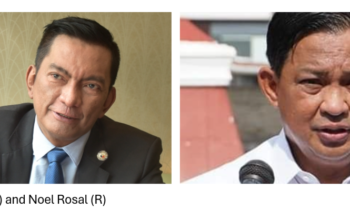Years ago, Lafayette Limited, one of the mining companies operating in the Rapu-rapu, Albay, had to open its gates for experts to conduct different kinds of tests to ensure that its operations are safe and does not harm the environment. Specialists were deployed including a team that collected water samples from a stream. During the collection process, one team member slipped and fell into the water that the rest have to wait for the sediments to settle down before completing the task. Just then, an onlooker residing near the area quipped: Why not just collect samples from the edge where the water was not disturbed?
The suggestion was practical, but the team leader just ignored the statement. Whether it was because of the “I am the expert here” attitude or he just didn’t care, nobody knew. What is clear is that one cannot just pick samples anywhere. There must be some standards to follow just like in judging the taste of an instant coffee. To judge whether the coffee is sweet or bitter, one need not drink the contents of whole cup. A spoonful would be enough, and that spoonful is what we call the “sample”. But of course, we need to stir the coffee first before we take our spoonful. Otherwise, we may just be collecting a wrong sample similar to the proposal of just collecting water from the edge of the stream.
The concept of sampling, be these in streams or in cups of coffee, is the same as in the conduct of surveys. But since we cannot literally stir the people to be able to get a “spoonful” of sample, we follow protocols on how and where to select the respondents. To determine the “how” and the “where” we go back to the “why” – that is, the purpose of our survey.
Sampling varies on the survey’s objective. If we wanted to understand the sentiments of the people of Albay, we do not select the people of Camarines Sur or the residents of Sorsogon to be our respondents. We select from Albay. Not unless we wanted to know the sentiments of the Albayanos residing in said provinces. As to how many should the number of respondents be, there are many considerations among them the time the results are needed, and the available resources. Otherwise, if resources are sufficient, a census or the enumeration of the total respondents is the ideal.
Assuming that the resources are limited, and time is of essence, there is no choice but to take only a sample. Hence, we need to compute the sample population vis a vis the total population. In the computation, among the variables to consider are the margin of error, the level of confidence and the confidence interval. The lower the margin of error, the higher the number of sample population, and the costlier. Hence, most would just settle with a plus/minus 3% to 6% margin of error.
Once the sample population is determined, the next is the determination of the process of sample selection. There are many ways to do it the most common of which is random sampling – random because we want to ensure the representativeness of the population and we want to avoid a bias. Lottery is an example of a simple random sampling. Christmas raffles also represent simple random sampling. Not everyone is drawn because everything depends on luck – unless the lottery or raffles is rigged.
But since it is an operational nightmare to locate the voters, whose names were drawn through a lottery system, pollsters usually resort to systematic random sampling. For nationwide surveys, some would randomly select the names of places (i.e., municipalities/cities and/or the barangays), and from there select the houses based on some skipping patterns. Consider that there are 44,000 barangays in the country so the probability of your barangay being selected as an area for sampling is less than 1%. In some instances, stratification is also applied depending on the phenomena or variable one would like to observe. That is another story, though.
Even assuming that your barangay is chosen, you may not be automatically included because to the skipping patterns – that is, the number of houses to be skipped to get a respondent, and the kind of household member that should be interviewed in that house. So, the probability of you being included as a sample of a nationwide survey is close to zero.
Because of said probability, many are therefore doubting the results of surveys being released. Well, not all surveys are equal. Legitimate and scientific ones are transparent particularly with regards the process and sample selection that if any researchers would like to validate, he/she can replicate the process and arrive at almost the same results. So, why are almost all of us not included in the survey sample selection? Because there are protocols to follow and we do not just collect from anywhere otherwise, validation and replication will be very difficult. Just like in getting a water sample from a stream.









